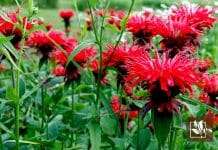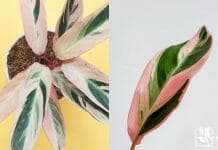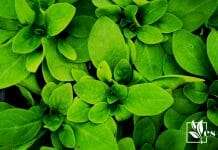Plants that look like blueberries might be safe to eat, and you can grow them on your lawn or even encounter them while hiking.
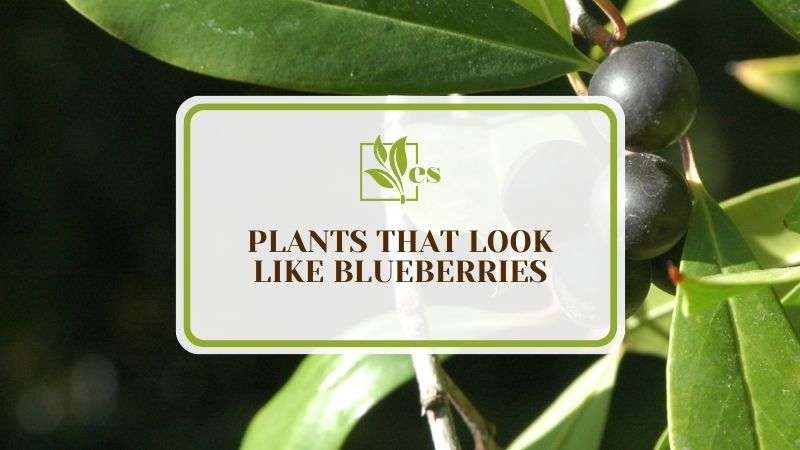
But before you confidently approach what might look like an innocent blueberry bush, you should examine the plant a little because some poisonous berries might not look that threatening at all.
This article will help you identify several blueberry lookalikes, so let’s learn more about them.
JUMP TO TOPIC
List of Plants That Look Like Blueberries
1. Black Huckleberries
Although these are called black huckleberries, they’re actually a deep blue-purple shade, darker than blueberries. The shrubs look very close to blueberry shrubs, but you can tell the difference between the two plants by examining the resin spots on the underside of the leaves.
– Features
Black huckleberries are safe to eat and are the most common type of berries you might encounter in the wild while taking a walk. They have toothed leaves and grow yellow or pink flowers in the summer.
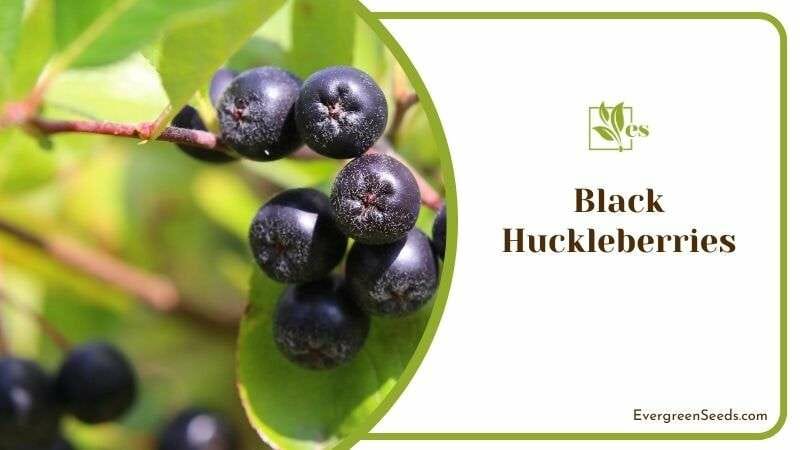
The fruits are a food source for many birds and mammals, and they’re the tastiest among the huckleberry family. However, they’re more acidic than blueberries. Most people will use them in pies and jams, although some people will eat them fresh.
– Growing Conditions
Black huckleberries grow from a 5-feet tall perennial shrub. You need to start them for a couple of years in a peat moss-filled pot before transplanting them in your garden. They can adapt to many light conditions and have moderate to dry water requirements. The black huckleberries thrive in acidic soil and are cold-hardy once established.
2. Black Chokeberries
Black chokeberries aren’t poisonous, but they get their name from the fact that they’re too bitter when eaten raw, so they might choke you. Nevertheless, many people love to eat them in jams and pies. They have attractive dark green foliage that turns reddish purple in fall and grows beautiful white flowers in the spring.
– Description
In the late summer, the shrubs grow purplish-black edible fruits. Some varieties grow their fruits in fall as well.
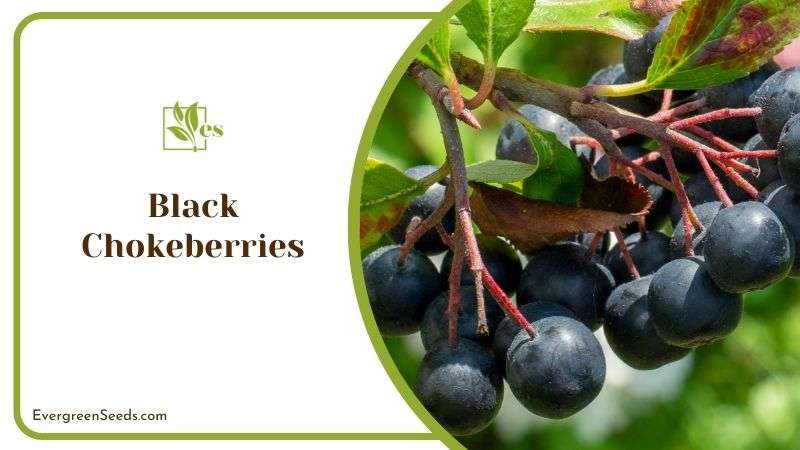
This shrub is almost maintenance-free; as long as you remove the suckers to keep it under control. It can grow in partial shade, but access to full sun will boost flowering and increase the number of fruits.
– Why You Should Grow It
The black chokeberry shrub is highly adaptable and can grow in several dry and moist locations. It withstands different soil conditions, although it thrives in acidic soil. It thrives in areas with good draining, but it can tolerate boggy soil. So this can be an excellent choice if you have wet soil where other plants won’t grow.
3. Bilberries
Bilberries, also known as British bilberries or British blueberries, are blueberry lookalikes that are also edible. As a matter of fact, people believe that they’re tastier than blueberries. Bilberries are primarily found in the wild, growing on tiny, wiry shrubs.
– What They Look Like
The fruits are intense blue with a gray hue and taste acidic when eaten raw. However, bilberries are commonly used in jams, pies, meat dishes, and salads to add a little tinge. They’re not easy to find in stores, and you can see their bushes in the wild growing on higher grounds. You can grow them to complement the look of your cottage garden.
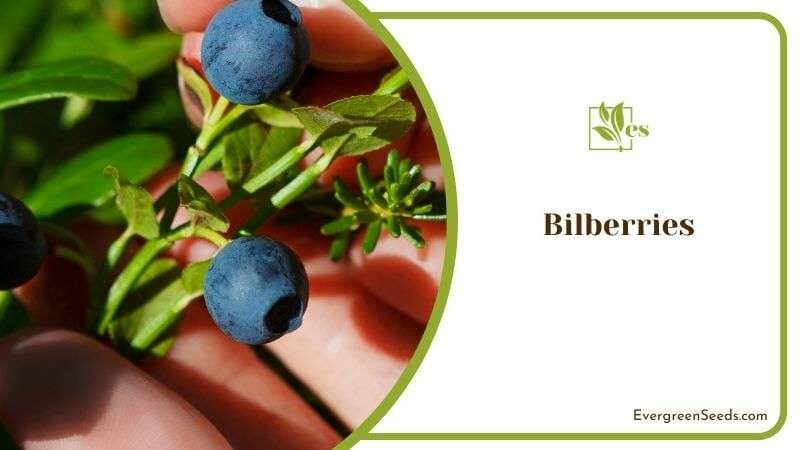
– Growing Requirements
Bilberries need to be started in a pot before growing in your garden. They thrive in acidic soil, and if the soil is too alkaline, you should add ericaceous compost. Like other woodland shrubs, bilberries prefer to grow in partial shade but also tolerate full sun.
These shrubs have shallow root systems that must be kept moist, especially during the first season. As the plant gets established, you can reduce watering while deep watering once a week during dry spells.
4. Serviceberries
Despite their gorgeous look and good taste, the story behind the name of serviceberries is rather sad. These bushes begin to bloom just as the ground thaws. This means that the ground can be dug up for burial, and funeral services can be resumed.
Serviceberries taste like a hybrid between cherries and blueberries, and the older fruits are more flavorful. They can be used to make cobblers, pies, jellies, and jams. Songbirds also love them.
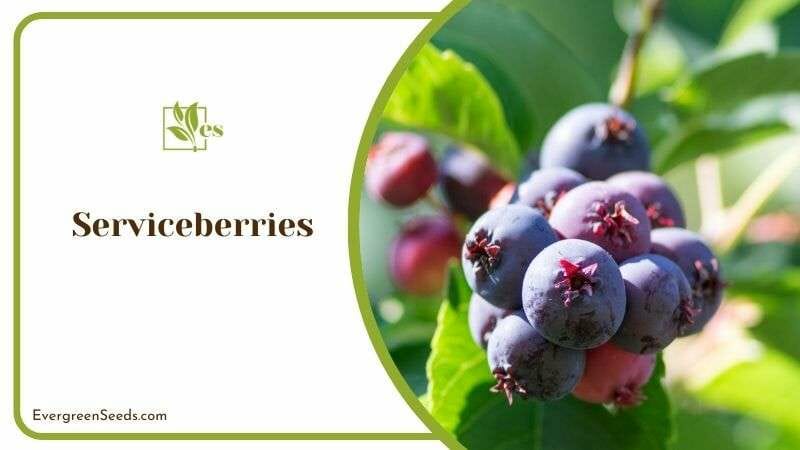
– Description
Serviceberries can grow from small trees or shrubs and have beautiful green-blue foliage. The flowers are early bloomers and are often white, although some rare varieties can grow yellow, pink, or streaked flowers that can be white and red. The fruits appear around June, and they’re green. Then they mature and become red or purplish black. In the fall, the foliage becomes reddish.
– How To Grow Them
Serviceberries can tolerate partial shade but prefer at least four hours of full sun to encourage blooming. They’re tolerant of several soil conditions and types but prefer moist, well-draining, slightly acidic soil. They contain tiny seeds that taste like almonds and release an almond-like scent when crushed.
5. Beautyberries
If you’re in the wild, you might mistake the beautyberries for small immature blueberries, but in reality, this is a totally different plant. The beautyberry shrub is a moderate grower, reaching a height of about 9 feet in optimal condition. Although the foliage isn’t that significant, the bright purple clusters of berries make this an excellent addition to your garden.
– Features
The beautyberry bush grows pink, white, and purple flowers in spring and summer, and the spectacular fruits appear in late summer and fall. The berries are safe for animals and humans, and most people use them to make jams and preserves. When raw, beautyberries have a unique flavor which is mildly sweet and spicy.
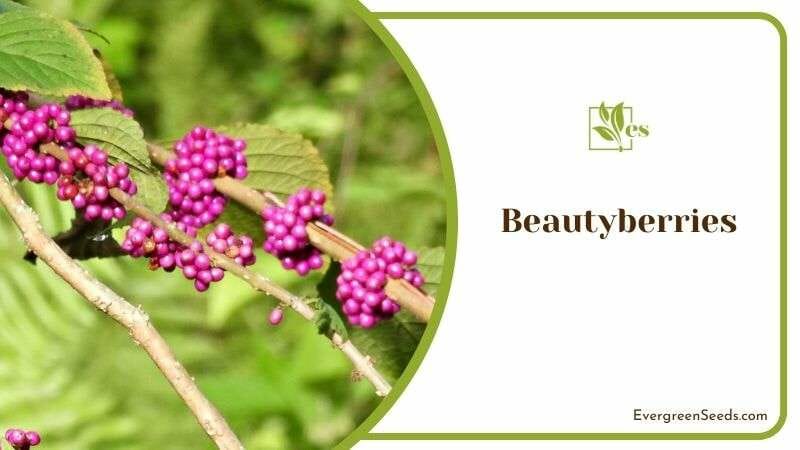
– Growing Conditions
You can grow beautyberries in different soil conditions, but they thrive in loose and fertile soil. The shrubs can be grown as border plants and are not prone to severe problems.
They need about two hours of full sun but tolerate partial shade. Providing the shrubs with one inch of water per week is recommended, and adding compost will improve the shrub’s health if the soil is inferior.
6. Deerberries
Deerberries are closely related to cranberries and blueberries, but they’re not as tasty as blueberries. Although they’re edible, these berries are tart and bitter, so they’re rarely eaten raw. However, some people use them to make jam. In addition, birds and animals, especially deer, are fond of this plant and will eat the berries.
– How To Identify Them
The deerberry shrub can be about 15 feet tall in optimal conditions, and the bark is reddish brown. The leaves are very close to blueberry leaves but are not glossy.
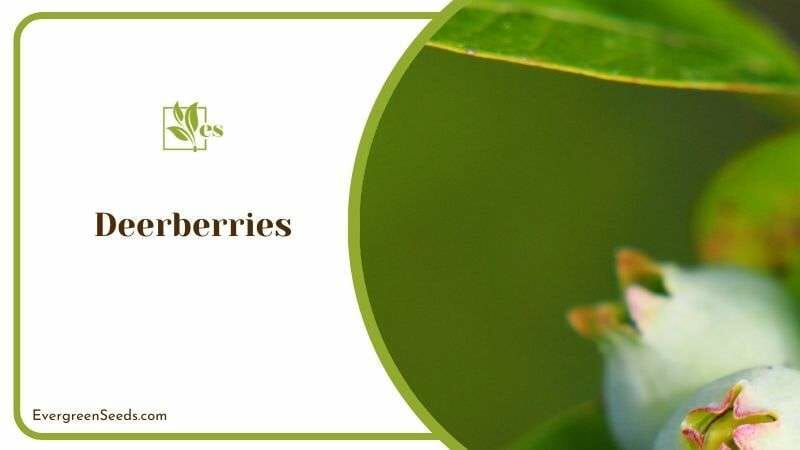
The shrub grows beautiful bell-shaped white flowers in spring, and the purple-black berries mature in late summer and fall.
– Where and How to Grow Them
You can easily grow this acid-loving plant next to blueberry bushes. It thrives in well-draining, moist soil and prefers full sun. However, it can tolerate some partial shade. This might be a good choice if you have a small garden, so you can reserve a sunny spot for your blueberries.
7. Mexican Barberries
People usually grow Mexican barberries or mahonia shrubs for their showy flowers. This is a slow-growing shrub with glossy, leathery leaves that grows beautiful lemon-yellow flowers in winter and spring. These gorgeous flowers are extremely attractive to pollinators and add a dramatic edge when the shrub is planted as a border or edging plant.
– What You Need to Know
When the flowers dry, the plant grows berries that resemble the ones growing on a blueberry plant. Songbirds love these berries, and they’re safe for humans and pets. However, they’re too acidic, so most people prefer to cook them before consuming them.
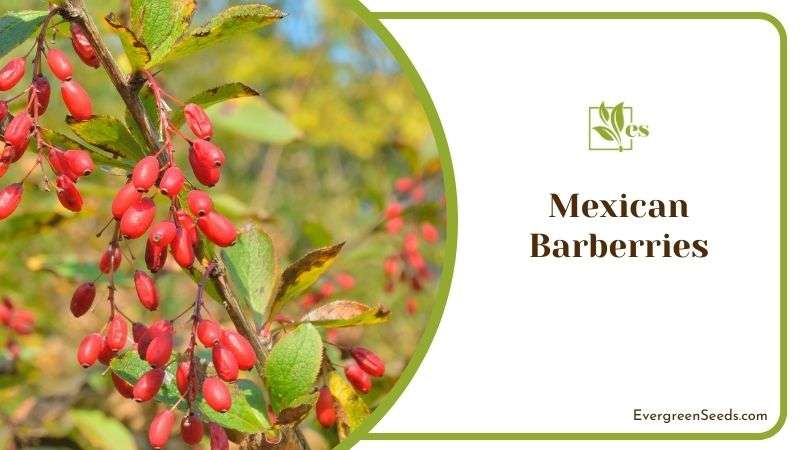
– Growing Conditions
Mahonia shrubs are tolerant of many light conditions but thrive in partial shade. They can also grow in any soil as long as it’s well-draining and moist.
This is why they will work for you if you have a problematic area in your garden. Once established, the mahonia shrub will be drought-tolerant, but it’s known to suffer from several pest problems, including rust and powdery mildew.
8. Sweetberry Honeysuckle
Sweetberry honeysuckle is also known as honeyberry and edible honeysuckle. This is a cold-hardy shrub that grows blue-green oval leaves and cream flowers that bloom in spring. The plant takes one year to bloom, and the fruits might appear after a few years.
– Features
The fruit forms in late summer and looks like a powdery blueberry. It’s blue, then it ripens and turns purple, and this is the best time to eat it. When mature, the sweetberry honeysuckle tastes like a cross between a blueberry and a blackberry.
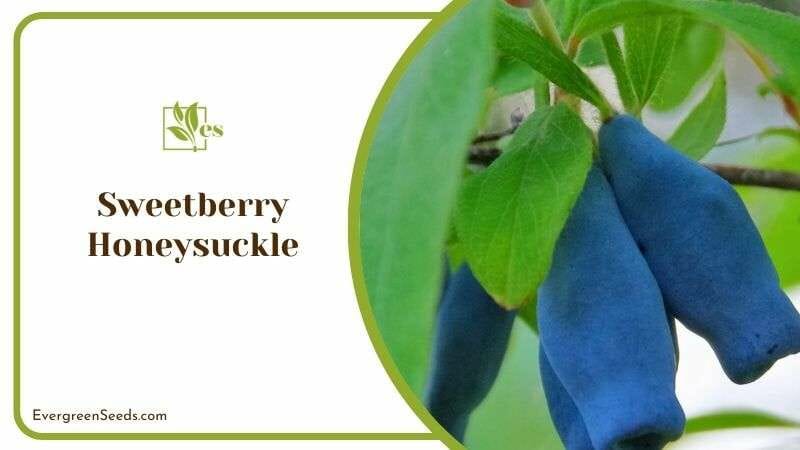
– Care Tips
The shrub of the sweetberry honeysuckle can grow in cold conditions, but different cultivars are more suitable for colder weather. This plant will struggle in the shade, so it’s better to grow it in full sun.
Unlike blueberries and their close relatives, this one can tolerate alkaline soil but can also grow in neutral and acidic soil. Fertilizing this shrub in the spring is crucial, and it becomes drought-resistant when it matures.
9. Elderberries
Elderberries are wild berries that grow on trees that have shrub-like growth. The leaves grow in groups on each side of the red stems, and the waxy fragrant flowers bloom in spring. The elderberries appear in the fall, and are among the most commonly found wild blueberries lookalikes, so you need to pay attention to their foliage before consuming the fruit.
– Issues
The trees have shallow roots that aggressive weeds can easily overcome, so you need to watch your elderberries to ensure that they’re growing well.
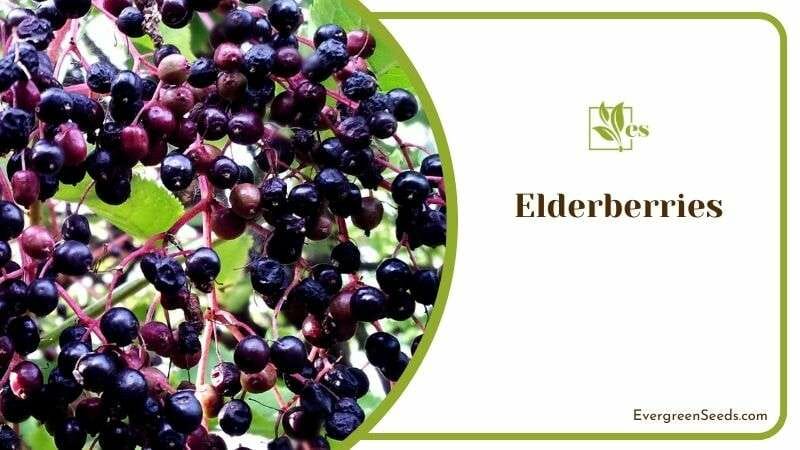
The shrubs should be placed about ten feet apart to adequately allow every root system to branch. Although they’re edible, they need to be cooked first to neutralize the toxic alkaloids. When eaten raw, elderberries are toxic to humans and pets.
– Growing Requirements
Elderberries can grow in different soil conditions but prefer well-draining, moist soil. New shrubs require more water as the shallow roots can’t reach the water deep in the soil, but once they mature, you can provide this plant with one or two inches of water per week. In addition, the full sun will encourage better blooming.
10. Virginia Creeper Berries
The Virginia creeper is a shade-tolerant vine that is mainly grown for its impressive fall foliage, which turns from green to burgundy red as the temperature drops. It can reach a height of 50 feet tall and grows greenish-white flowers in the summer.
– Growing Tips
Although it’s tolerant of shade, this plant will reach its impressive fall color when it has access to full sun. The Virginia creeper grows in several soil conditions and needs regular and deep watering during its first season.
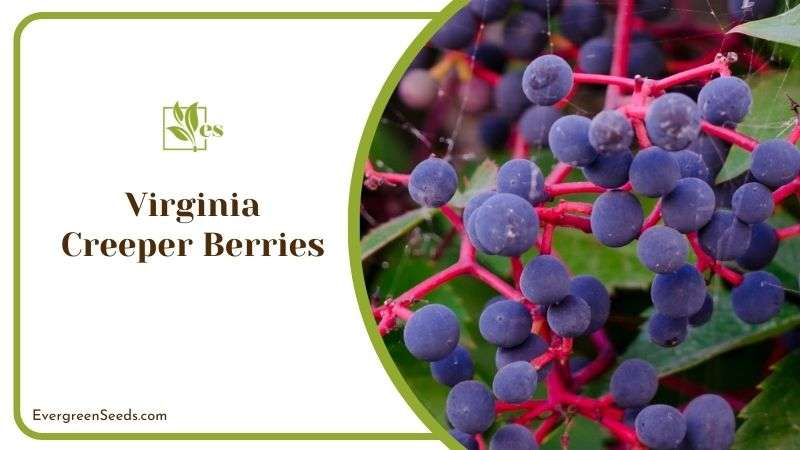
– What To Look Out For
The flowers dry to grow blueberries lookalikes that are severely toxic to humans because they contain oxalic acid. However, birds love these fruits and can eat them safely.
Moreover, touching all parts of this plant can lead to skin irritation. The Virginia creeper vine can become invasive, shading other plants and trees and negatively impacting their growth, so it won’t work for you if you want a low-maintenance plant.
11. Deadly Nightshade Berries
Belladonna or deadly nightshade shrubs bear berries that are considered among the most poisonous wild berries, but they can easily be mistaken for blueberries.
The fruits grow on a shrub with vine-like branches and arrow-like leaves. This plant grows mildly scented purple with some green tinge bell-shaped flowers in early spring. By late summer, these flowers turn into blueberry-like berries.
– Description
When they first grow, the berries are green, and then they turn dark purple or almost black. Although some varieties of nightshade berries are edible when ripe, some of them are highly toxic.
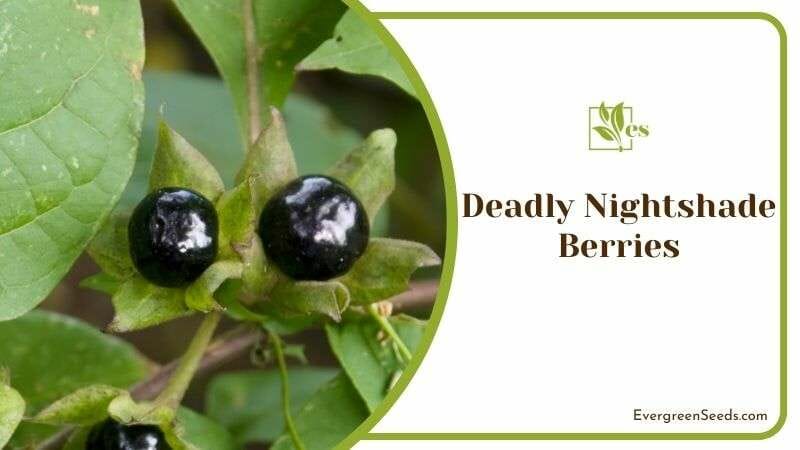
They taste sweet when first eaten, and then within a short period, can be fatal. It takes only two berries to be fatal to a child and ten berries for an adult. The plant is also toxic to pets.
– What You Need to Know
Belladonna, or deadly nightshade, is rarely grown in gardens because it’s undesirable and also has very particular growing conditions. However, in the wild, the deadly nightshade plant is more adaptable and will grow in all types of soil, including clay and stony soil.
It can also tolerate different pH levels but thrives in full sun. The plant usually grows near swamps and disturbed land, but don’t try to eat the berries even if they look delicious.
12. Pokeberries
Although pokeberries are toxic, they’re used in the food industry for coloring. They can also be used to color wine or produce ink or dye. The pokeberries grow from the pokeweed, an obnoxious weed that grows in your garden. This weed dies every winter, but the roots remain alive, so the plant will come back every year.
The weed looks somewhat similar to a blueberry plant, but it grows white-greenish flowers, so you should be able to easily identify and remove it.
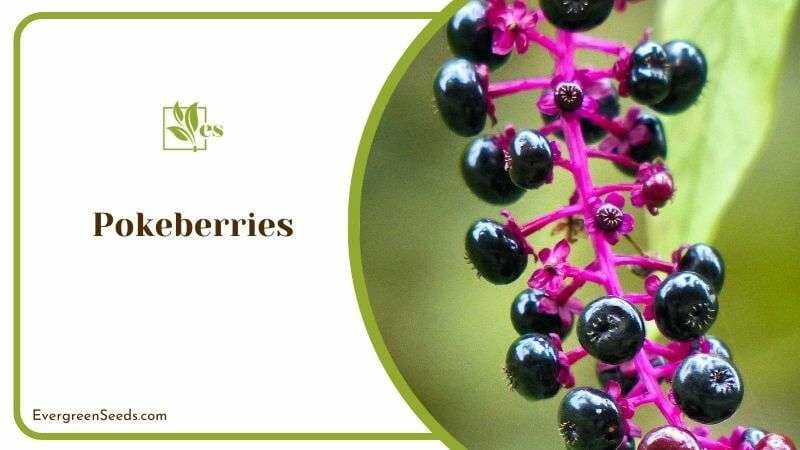
– Issues
The pokeberries are toxic to humans and pets, but they’re eaten by birds, which help distribute this plant to grow from seed. Unfortunately, this plant gets more toxic when it matures, and eating it can be fatal.
– Planting Ideas
Despite the dangers of pokeweed, some people still choose to grow it in pots as an ornamental plant. You can plant it in fertile loamy soil, but it can tolerate different soil conditions.
You can grow pokeweed in full sun or some shade, and it easily spreads. Because of its flexibility and adaptability, you need to remove pokeweed as soon as you see it growing in your yard or lawn.
13. Water Hemlock Berries
Water hemlock is a poisonous wild blueberry lookalike that can be found along riverbanks and near marshes as it thrives in wet environments. The shrub grows to be eight feet long with sharply-toothed leaves that are hard to miss.
In the spring and early summer, this plant grows clusters of multiple tiny white flowers, and in fall, you’ll see purple-black berries that look like mini blueberries and are very close to elderberries.
– Growing Conditions
Water hemlock is often found growing in wetlands, and it’s not a plant you want to grow in your garden, mainly because of how toxic it is, as touching the plant can make you very sick.
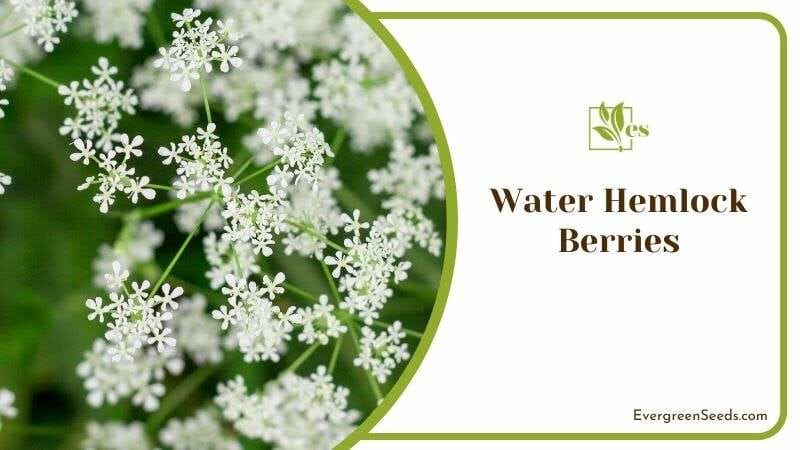
It can survive in clay or deep loamy soil and can even grow as an aquatic plant submerged in water. It thrives in full sun but tolerates partial shade.
– What To Look Out For
The best way to identify this plant is to take a look at the stems. If they’re herbaceous, then you need to stay away because all parts of the water hemlock are toxic.
It contains a chemical compound called cicutoxin, which is often fatal and leads to seizures. As a matter of fact, some historians believe that Native Americans used the water hemlock to poison the tips of their arrows for hunting purposes.




